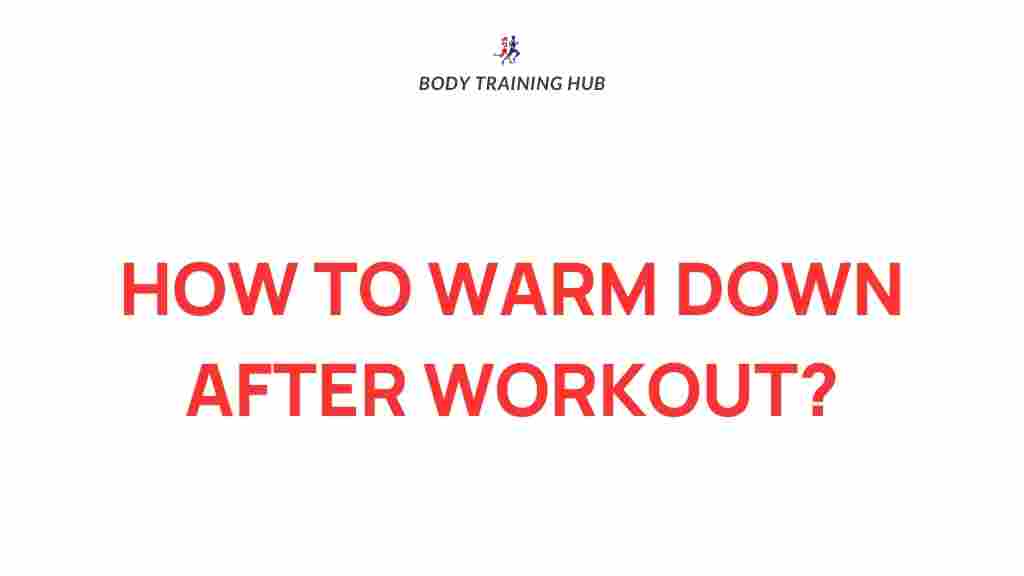The Science Behind Post-Workout Recovery Techniques
After a rigorous workout, many fitness enthusiasts often overlook one crucial aspect of their routine: post-workout recovery. This phase is vital for muscle repair, preventing injuries, and optimizing performance for future workouts. In this article, we delve into the science behind effective post-workout recovery techniques, focusing on stretching, cool down methods, and other essential fitness tips.
Understanding Post-Workout Recovery
Post-workout recovery refers to the processes your body undergoes after exercise to rebuild and repair muscle tissues, restore energy levels, and reduce soreness. Effective recovery can enhance your overall fitness journey and help you achieve your goals faster.
Here’s a breakdown of why post-workout recovery is essential:
- Muscle Repair: Intense workouts cause micro-tears in muscle fibers. Recovery allows your body to repair these tears, leading to increased strength and muscle growth.
- Energy Restoration: Exercise depletes glycogen stores. Recovery helps replenish these energy reserves, preparing you for your next workout.
- Injury Prevention: Proper recovery techniques can help prevent injuries caused by overuse or strain on muscles and joints.
Essential Steps for Effective Post-Workout Recovery
To maximize your recovery, consider implementing the following techniques:
1. Hydration is Key
Replenishing lost fluids is critical. Aim to drink water or electrolyte-rich beverages post-workout. Staying hydrated helps:
- Maintain optimal performance
- Promote nutrient transport
- Aid in muscle repair
2. Stretching
Stretching is one of the most overlooked aspects of post-workout recovery. It plays a significant role in enhancing flexibility and reducing muscle tightness. Here’s how to incorporate it effectively:
- Static Stretching: Hold stretches for 15-30 seconds targeting major muscle groups worked during your session. This helps in elongating the muscle fibers, promoting relaxation.
- Dynamically Stretching: Incorporate light movements to maintain blood flow without straining your muscles.
Key stretches to consider include:
- Hamstring Stretch
- Quadriceps Stretch
- Shoulder Stretch
- Chest Stretch
3. Cool Down
A proper cool down routine is essential to transition the body from an active state to rest. A cool down typically lasts 5-10 minutes and should include:
- Gentle walking or light jogging to gradually decrease heart rate
- Incorporating stretches mentioned above
4. Nutrition and Muscle Repair
Post-workout nutrition is crucial for muscle repair and recovery. Focus on consuming a balanced meal or snack within 30-60 minutes after exercising. Here are some nutrition tips:
- Protein: Helps repair and build muscle tissues. Aim for 20-30 grams of protein.
- Carbohydrates: Replenish glycogen stores. Include whole grains, fruits, or starchy vegetables.
- Healthy Fats: Incorporate sources like avocados, nuts, and seeds for overall health.
For a more detailed guide on nutrition, check out this comprehensive guide on post-workout meals.
5. Rest and Sleep
Never underestimate the power of rest. Sleep is when your body does most of its recovery work. Aim for 7-9 hours of quality sleep each night to:
- Enhance muscle repair
- Improve overall performance
- Boost mental clarity and focus
Troubleshooting Common Post-Workout Recovery Issues
Even with a solid recovery plan, you may encounter challenges. Here are some common issues and how to address them:
1. Persistent Muscle Soreness
Delayed Onset Muscle Soreness (DOMS) is common after intense workouts. To alleviate soreness:
- Engage in active recovery such as light walking or swimming.
- Consider foam rolling to release muscle tightness.
- Apply ice or heat therapy as needed.
2. Fatigue and Low Energy Levels
If you consistently feel fatigued post-workout, reassess your hydration and nutrition. Ensure you’re:
- Drinking enough water
- Consuming enough calories to support your activity level
3. Lack of Motivation
If you’re struggling to stay motivated, try varying your workouts or setting new fitness goals. Incorporate group classes or workout with friends to keep your routine exciting.
Additional Fitness Tips for Enhanced Recovery
In addition to the techniques outlined, here are some extra fitness tips to help enhance your post-workout recovery:
- Listen to Your Body: Pay attention to how you feel after workouts and adjust your routine as necessary.
- Consider Active Recovery Days: Incorporate low-intensity activities like yoga or walking to promote blood flow without taxing your muscles.
- Mindfulness and Relaxation: Practices like meditation or deep breathing can reduce stress and promote recovery.
By incorporating these tips into your routine, you can optimize your post-workout recovery and ensure that your body is primed for peak performance.
Conclusion
Understanding the science behind post-workout recovery is essential for anyone serious about fitness. By focusing on techniques like stretching, proper cool down routines, hydration, nutrition, rest, and addressing common recovery issues, you can significantly enhance muscle repair and overall performance.
Remember, recovery is just as important as the workout itself. By prioritizing it, you’ll not only improve your physical health but also cultivate a more enjoyable and sustainable fitness journey. For further reading on recovery methods, check out this resource on advanced recovery techniques.
Implement these strategies, stay consistent, and watch your fitness levels soar as you give your body the care it deserves!
This article is in the category Strength & Recovery and created by BodyTraining Team
